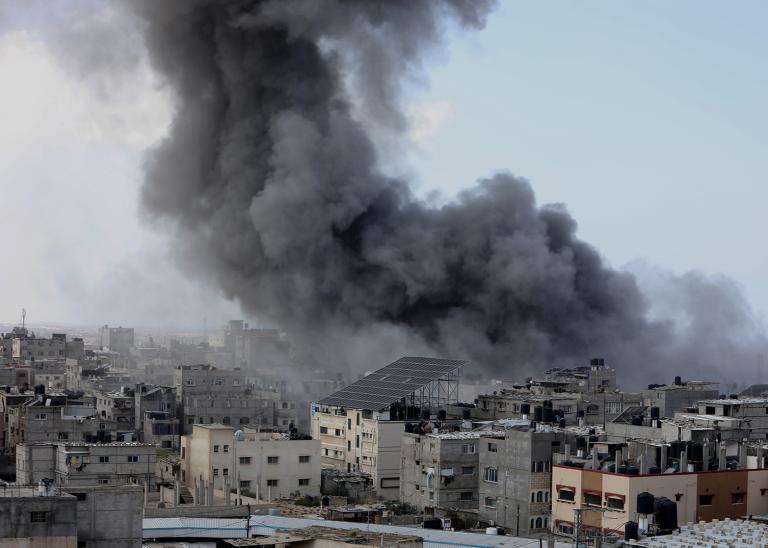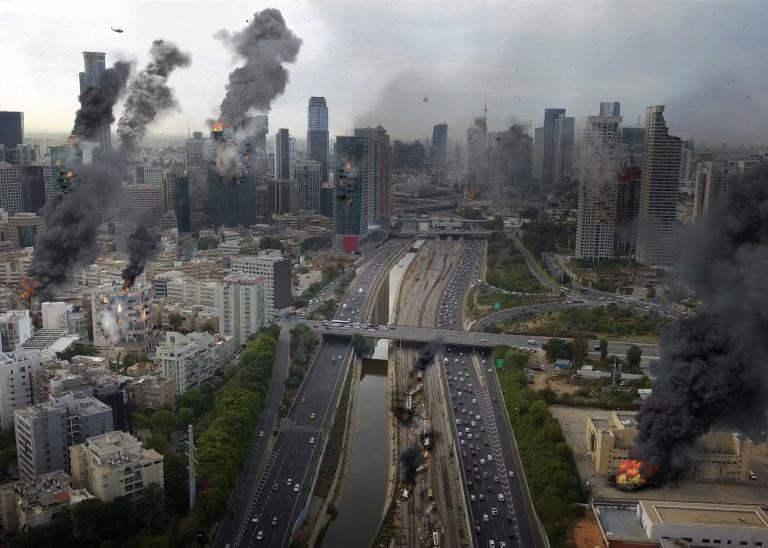22 Jul 2021 | 09:48 AM UTC
South China Sea: Tropical Depression Cempaka tracking west-southwestward over southern Guangxi as of July 22 /update 7
TD Cempaka tracking west-southwestward in southern Guangxi, China, July 22. Landfall forecast in western Hainan July 24.
Event
Tropical Depression Cempaka is tracking west-southwestward in southern Guangxi, China, as of July 22. As of 17:00 CST, the system's center of circulation was approximately 306 km (190 miles) northeast of Hanoi, Vietnam. Forecast models indicate the storm will maintain its strength as it shifts southwestward as it tracks over southern Guangxi, China, and northeastern Vietnam. Cempaka is forecast to turn to track southward then southeastward as it transits over the Gulf of Tonkin while strengthening slightly and making another landfall near Dongfang on the western coast of Hainan July 24. The system is forecast to then weaken as it transits eastward, exits into the South China Sea, and dissipates just east of Qionghai, Hainan Province by July 25. Some uncertainty remains in the track and intensity forecast, and significant changes could occur in the coming days.
Government Advisories
As of July 22, the following advisories are in effect:
The China Meteorological Administration has issued a yellow heavy rain alert (the second-lowest alert level on a four-tiered scale) for parts of southern Guangxi, southwestern Guangdong, and northern Hainan. Rain of up to 12 cm (4.5 inches) is possible in the affected areas.
The Vietnam National Centre for Hydro-Meteorological Forecasting has warned of strong winds and large waves in the Gulf of Tonkin with winds of up to 30 knots (55 kph/35 mph) and waves of 2-3 m (6.5-10 feet). A heavy rain warning is also in place for the Northeast, Red River Delta, and North Central Coast regions.
Authorities will likely issue new warnings throughout the system's progression in the coming days. Weather warnings could remain active even after the storm's immediate threat has diminished, as some areas may still be highly susceptible to rain-induced hazards; this is especially true in areas previously impacted by tropical systems earlier this season.
Hazardous Conditions
Tropical Depression Cempaka will likely bring heavy rainfall, strong winds, and storm surge in parts of the affected area through at least July 25. Impacts will likely be felt in western Guangdong, southern Guangxi, and Hainan provinces in China as well as the Northeast, Red River Delta, and North Central Coast regions in Vietnam.
Sustained heavy rainfall could trigger flooding in low-lying communities near streams, creeks, rivers, and urban areas with easily overwhelmed stormwater drainage systems. Sites located downstream of large reservoirs could experience flash flooding after relatively short periods of intense rainfall. Rain-induced landslides are possible in steeply sloped terrains. Flooding could isolate some communities for several days. Prolonged swells and storm surge generated by the system will likely result in coastal flooding as the system approaches land. A persistent onshore flow could make it difficult for the surge to recede and water levels to decrease in coastal river catchments.
In addition to heavy rain, flooding, and storm surge, the system could produce damaging wind gusts in affected regions. Tropical-storm-force wind gusts may occur. Localized power outages are possible due to uprooted trees and toppled utility lines.
Transport
In addition to the immediate threat to personal safety, inclement weather associated with the storm could trigger localized business, transport, and utility disruptions through at least July 25. Floodwaters and debris flows may render some bridges, rail networks, or roadways impassable, impacting overland travel in and around affected areas. Areal flooding in urban locations could also result in severe traffic congestion, while strong winds will pose a hazard to high-profile vehicles. Heavy rain and low visibility may trigger flight disruptions at regional airports.
Disruptions triggered by inclement weather and resultant hazards, such as flooding, could persist well after weather conditions have improved. If there is severe damage to infrastructure, repair or reconstruction efforts may exacerbate residual disruptions.
Advice
Activate contingency plans in areas where officials forecast tropical storm conditions. Heed any evacuation orders that may be issued. Use extreme caution in low-lying coastal areas and near streams, creeks, and other waterways due to the high potential for flooding and storm surge. Stockpile water, batteries, and other essentials in advance. Charge battery-powered devices when electricity is available; restrict the use of cellular phones to emergencies only. Power down mobile devices when not in use. Keep important documents and necessary medications in waterproof containers. Observe strict food and water precautions, as municipalities could issue boil-water advisories following flooding events.
Plan accordingly for commercial, transport, and logistics disruptions in areas in the path of the storm. Seek updated information on road conditions before driving or routing shipments through areas where flooding has occurred. Confirm flights before checking out of hotels or driving to the airport.
Resources
China Meteorological Administration
Vietnam National Centre for Hydro-Meteorological Forecasting (Vietnamese)
Joint Typhoon Warning Center


